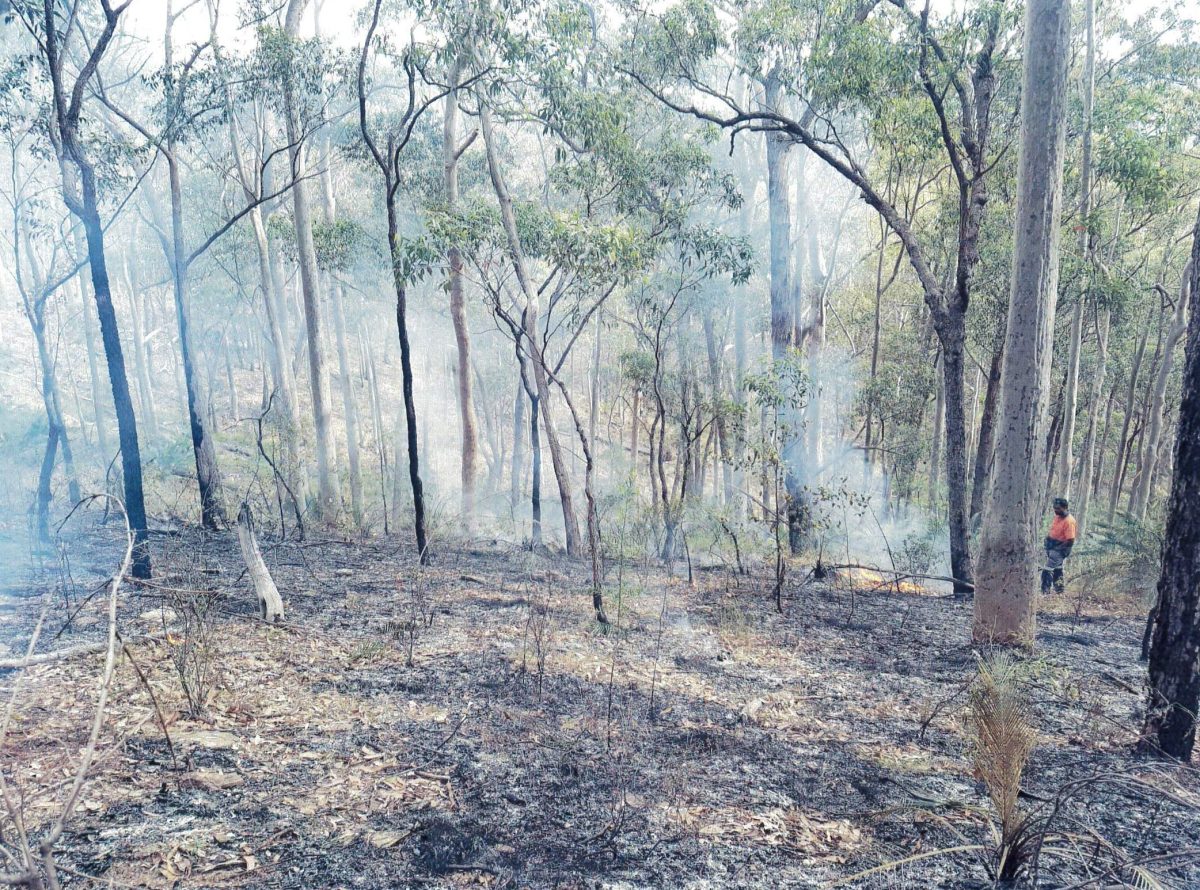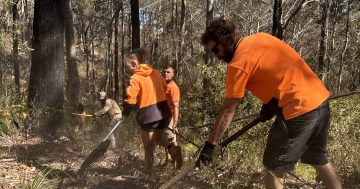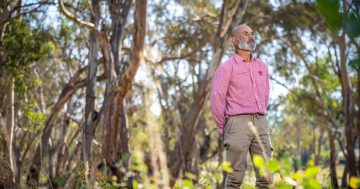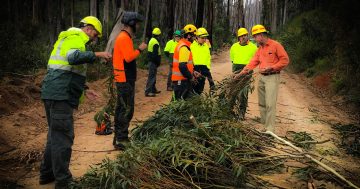
FRNSW adopt traditional methods, working closely with the Bega LALC, to conduct low-intensity cool burns in Merimbula at Tura Beach Flora Reserve. Photo: Fire and Rescue NSW.
Alternative practices of fire hazard reduction have been considered on the South Coast since the Black Summer bushfires.
Since 2020, Fire and Rescue NSW (FRNSW) has been working with various Local Aboriginal Land Councils (LALCs) to implement traditional methods of bushfire reduction across the state, including the South Coast.
Walbunja firefighter and leading station officer at FRNSW Craig Marshall said after Black Summer people sought alternatives to established land management trends.
“We realised, after the last big bushfires, some of the land management practices we were historically using were ineffective and, in a lot of places, not applicable,” he said.
“People want to see cultural burning back in the landscape, not just to see how it works and why we do it but for the fundamentals around cultural learning.”
Walbunja man and head ranger at Batemans Bay LALC, Andrew White, said the Batemans Bay LALC had independently embraced cultural burning.
“We have our own fire sponsoring body where we can do everything from our own burn plans through to initiating fire and conducting our own fire,” he said.
Fire practitioners within the organisation take a holistic approach when taking care of Country.
“We don’t put a time and a date on burns, we wait for Country to tell us when to burn. We manipulate the fire from the different variables of the day,” said Mr White.
He says traditional burners consider variables such as soil structure, forest types and cultural significance before conducting burns.
“These indicators are crucially important for us to know when to put fire on Country and eliminate all those other variables such as out of control fires,” said Mr White.
“We haven’t got that sole purpose of hazard reduction – it’s more about keeping Country healthy, to suppress fire with healthy Country.”
Responding to the wishes of the community, Mr Marshall helped to develop a doctrine that enables FRNSW to support cultural burning as a community-led project.
“The bureaucracy sometimes is a bit too much for cultural burners. So, that’s where Fire and Rescue have come in to guide them through some of those roadblocks,” he said.
For FRNSW, cultural burning has become “another string in our bow” for bushfire risk reduction, Mr Marshall said.
Mr Marshall said the impacts of the Black Summer were ongoing, and cultural burning is being used to repair damage to the ecosystem.
“The hot fire burned through and pretty much destroyed everything from the entomology in the ground to the tops of the trees. Invasive natives have taken over that space very quickly,” he said.
“While it looks lush and green, it’s not really a healthy ecosystem that can sustain life. We want to be able to make sure that by putting these cultural burns on the ground we return the ecosystem back to a healthy ecosystem where animals and insects can thrive.”
Since the Black Summer, the Batemans Bay LALC has adapted its cultural burning traditions.
“We have been utilising our traditional practices to accommodate for asset protection by burning around infrastructure [such as houses] a little bit and putting strategic fire to slow or suppress fire,” Mr White said.

Fire practitioners from Batemans Bay Local Aboriginal Land Council utilise their traditional knowledge to conduct cultural burns on Country. Photo: Batemans Bay Local Aboriginal Land Council.
Private landowners have been outsourcing cultural burning for bushfire risk reduction.
“They’ve seen how the other fire sponsoring bodies do their fires and they don’t like that process of hot burn,” Mr White said.
“We give them that option of having healthy Country – talk to them about the reasons why and when we put fire through to keep endemic species to those areas, which in turn allows them to act as a deterrent or a suppressant for fires.”
He said communities would be well served in the long run when cultural burning and other avenues of Indigenous knowledge were considered in managing land.
“I think the Black Summer bushfires have pushed everything to the forefront and it’s not a quick fix or anything but it’s about this holistic approach of how to care for Country better,” Mr White said.
“The management strategies in place need to be assessed to include traditional land management.”









